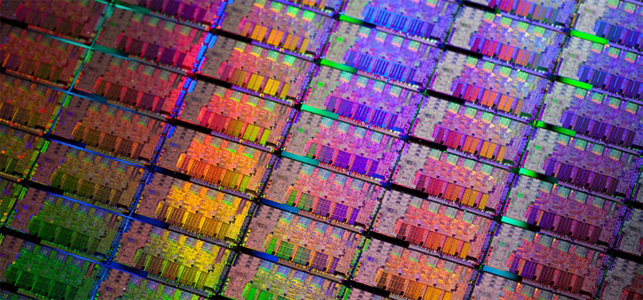Sandy Bridge is the codename for Intel’s brand new CPU architecture, which was launched at the beginning of January 2011.
It represents the second generation of the chip giant’s Core Processor family of CPUs and currently features two or four CPU cores on a single chip. Intel will retain the Core i3, Core i5 and Core i7 branding which it established last year.

There are a number of architectural improvements for Sandy Bridge.
The Turbo Boost system, which temporarily clocks up CPUs to help deal with peak processing loads, has been enhanced and now more CPU cores can be accelerated at once.
The permanent overclocking of chips has also been made easier and is now handled directly inside certain Sandy Bridge chips. Processors with a K suffix are fully unlocked and can be overclocked by as much as 1GHz (up to 4.5Hz) with standard air-cooling. Speeds of 5GHz have also been reported, when using liquid cooling technology.
The integrated Graphics Processing Unit (GPU) has also been enhanced and moved onto the same silicon die as the CPU. However, this is unlikely to be of interest to 3D CAD users as professional workstations use discreet professional graphics cards, such as Nvidia Quadro or AMD FirePro.
The line up
Intel has launched Sandy Bridge with a nucleus of eight desktop Core i3, Core i5 and Core i7 processors.
The Sandy Bridge Core i3s are dual core processors. Turbo Mode is not supported and, together with the keen price Intel has given its high-end Sandy Bridge chips, it’s unlikely that these will be of much interest to users of CAD/CAM/CAE software.
All Sandy Bridge Core i5 processors are quad core but do not support Intel’s HyperThreading technology, which uses spare CPU cycles to add virtual CPU cores, and can offer a 10-15% performance boost when rendering.
Turbo Boost is included and speeds can be increased by 0.3GHz to 0.4GHz at peak load. The 3.3GHz Core i5-2500K is fully unlocked and can be clocked up to 4.4GHz across all four CPU cores with a standard Intel cooler.
Sandy Bridge Core i7 processors feature the full suite of Intel technologies – quad core, HyperThreading and Turbo Boost. They also feature a larger L3 cache than the Core i5, which can help boost performance in certain CAE software. The 3.3GHz Core i5-2500K is fully unlocked and can be clocked up to 4.5GHz across all four CPU cores with a standard Intel cooler.

Conclusion
Sandy Bridge is a very exciting proposition for CAD/CAM/CAE. It delivers exceptional performance at a very keen price point, which is perfectly demonstrated in our workstation reviews over the page.
Despite its incredible performance, Sandy Bridge should still be considered to be an entry-level to mid-range workstation chip – at least for the time being. Later this year we should see six and eight core chips and the technology will also make its way to the Intel Xeon platform.
This will mean Sandy Bridge will be available in dual processor workstations and servers. ECC (Error Code Checking) memory will also be supported, which can reduce system crashes. It is certainly going to be an exciting year for workstation technology.
To find out what we think of Intel’s new chip in action, here are three Sandy Bridge-based workstations that we have put through their paces using our CAD/CAM/CAE benchmarks.
InterPro Workstations IPW-Ci7
Workstation Specialists WS1410
Scan 3XS P67 Workstation






